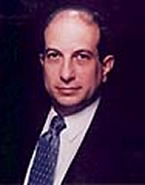There are few groups more reliable than the United States military. One could change all of their mottoes to "Again and again - no questions asked." Those who have served in the military have done so at a solid financial cost. Despite this, the years of the 1950s, 1960s and even into the 1970s were periods with high savings rates, rates that today appear almost unachievable. How did they save so much, seek to enjoy life so fully and raise another generation, the Baby Boomers?
Anyone who even remotely recalls their high school history class knows there are few, if any, groups more reliable than the United States military. Whether they are asked to invade an island in the middle of nowhere in the South Pacific, retake a continent heavily fortified by reinforced cannons and tanks or bomb an enemy capital city many miles away and only given fuel for a one way trip, the Yanks seem to fulfill their mission and have plenty of gusto to spare. Not only that, but when one war ended and another began only five (5) years later (Korea was approximately five [5] years after the Second World War) the military was more than willing to defend the country all over again. One might even change all of their various military mottos and sayings to - "Again and again - always available - no questions asked."
As you fast forward almost 60 years, those who find themselves in the forefront of one of today's most unpleasant financial dilemmas are many of the same individuals, both men and women (Rosie the Riveter and her older children) who undertook the majority of the military burdens that faced the United States from 1941 to 1955 and specialized segments before and after. The military does not keep time cards or score sheets with the general population, only the population knows they rest much better at night knowing full well the military and its universal massive supportive network are always available to supply a proper defense. No questions asked, just point the way!
At the present time, the way matters are pointing denotes that many of the same people who were eager to answer the call of duty from the 1940s and 1950s and even into the 1960s are again being asked to shoulder another call of duty, losing their abilities to benefit from their prior financial sacrifices on both a national and personal level. An analysis of the fundamental underlying problem is very simple. Persons who served in the military or in support of the military or even in a more general way, support of the overall national war efforts, did so on a basis and format that easily denotes a solid financial cost. Lost or diminished income over several years is not difficult to calculate, even via pencil and paper, computers aside. To offset a solid percentage of their losses from the "war years", as best possible, most of these same individuals continued to sacrifice. This time the sacrifice was on a personal basis to increase their personal savings to enjoy the fruits of their labors and their real output after the military conflicts ended. The years of the 1950s, 1960s and even into the 1970s were periods with high savings rates, rates that today appear almost unachievable. How did they save so much, seek to enjoy life so fully and raise another generation, the baby boomers (persons born between 1946 and 1964). While an analysis and description of the savings habits and output of persons mostly (not exclusively) born between 1920 (age 20 at Pearl Harbor Day) and 1941 is clearly the basis for another examination, the results are clear, they were the responsible youth of their time, fought twice and did not seek fame, fortune or glory. While it is true, that some individuals, smaller progressive firms and some significant enterprises did profit from the war, based upon their specialized output, most did not achieve any overly significant rewards other than the GI bill that opened American colleges to the general public, and the newly created middle class. The American taxpayer received a deal of a lifetime, significant military accomplishments on a very cost effective basis. A cost/benefit analysis of GI Joe, makes the purchase of Manhattan Island, a real "buy" in its day, now look overly expensive.
Seeking to combine the above historical facts with the personal financial problems that many, if not most individuals born around and between 1920 thru 1941 face at the present time into a succinct economic outline, reveals these individuals are again being short changed. Most, were not well compensated for their military output, even if you take into consideration the GI Bill. Many had their careers cut short, derailed and in many cases totally altered, mostly not for the betterment. Never the less, since the 1950s (end of the Korean Conflict) they have continued to work, contribute, save and support, most like true soldiers - again and again - no questions asked. From a review of our national history and the lack of public disturbances and negative social interaction, those whose lives were negatively altered via "any participation" (including civilian) in military conflicts, took it like a pro - and marched on. The enlarged percentage of baby boomers, the children of GI Joe and Rosie the Riveter who have graduated from college, is clearly another positive indication of their efforts and abilities.
The problem outlined above without thus far exactly detailing same, is the lack of income that savings from the 1950s onwards is presently generating for retired individuals. The persons outlined above and generally born between 1920 (now age 91) and 1941 (now age 70) were counting upon a combination of personal savings (dividends and interest) and social security to support them in their "sunshine years", after having undertaken sustained periods of personal sacrifice and contribution. Certificates of Deposit and other similar generally safe and fixed income instruments that provided yields of between 5.0% - 7.0% are now barely yielding 1.0% - 1.5%. Once again in their very final years, those who supported the nation, generated national growth during the very early years of our "new industrial state" and answered the call several times, are being more or less forced to - end upon on the short end of a personal economic deal.
If you subscribe to the theory that it is much better to reward people when they are alive than sending flowers to a funeral, would it not be appropriate for our overall financial system to correct the low interest rate predicament presently facing many older members of society. This correction would - make correct an inappropriate situation, strengthen our banking system, generate additional disposable funds and in general assist in our overall national recovery.
Quo Vadis?? - Where do we go from here, in simple terms a national policy (or regulation) would grant each and every person over the age of 66 (initial age of social security) the "right" (they do not "have" to participate) to purchase a Certificate of Deposit of not more than $200,000 from any commercial bank of their choice with over $2.5 billion in assets (or some specific size bank as chosen by the FDIC) for up to a three (3) year period. These specific instruments would pay 5.5%, yearly and the SCDs (Senior Certificates of Deposit) would carry an FDIC guarantee. A brief outline of the benefits to all parties from such an arrangement reveals an overall set of benefits of -
* Easing the current and hopefully short term financial problems of many of our very contributory senior members of society;
* Easy, simple and cost effective to administer as each recipient of a social security check would receive ONE (1) coupon to be utilized for the specific purchase of one SCD. The purchase of an SCD would require a coupon and one coupon per social security recipient for one SDC of up to $200,000, for up to a three (3) year period, per person. Once a person surrenders their coupon to an appropriate commercial bank, they would not have the ability to purchase any other SDCs unless the program was further enlarged or extended.
* Such a program would not increase any costs to our national government, social security administration or any public financing source or our yearly national deficit;
* Funds (quarterly interest) received by most, if not all of the senior social security recipients would be spent or consumed as opposed to saved or invested. This would clearly, via the multiplier theory, assist in lifting our economy up from unpleasant levels of current activity;
* Most larger commercial banks should be eager to attract seniors into this program for the benefit of their own financial institution(s). Under the general terms of the plan, the selected banks would receive three (3) year funds that are more or less "guaranteed" to remain at the institution for at least this period of time and would fall under a category for lower reserve requirements;
* Further, commercial banks wherein seniors selected to purchase their SDCs would also be free to solicit (NOT require) other business from seniors who purchased the SDCs. Since many seniors and members of their families would prefer - one stop banking, they would move all or parts of their banking activities to banks wherein they selected to purchase their SDC. Since bankers would be fully aware of these "one stop banking" tendencies, many banks would seek to solicit these individuals and their purchase of SDCs from their institutions. The income generated by customers (and their families) other activities would most probably make up for any general interest short fall that that might be created by the banks being "forced" to pay interest at 5.5%, an above market rate at this time; and
* Successful bankers who attracted a significant number of seniors to purchase SDCs would have also generated additional loanable funds from which they could also profit via a wide range of loans that yield greater than 5.5%, but still contain a solid element of safety for the institution.
While the above is clearly an initial and preliminary outline as the first step to cure an important and growing problem, it does set a path or agenda for a prompt, easy and costless solution. The general concept of seeking to eliminate a growing financial problem, increase bank liquidity and generate additional disposable income, all at basically no cost to the taxpayer, is one that should not be overlooked or just cast aside since it might present a concept not previously implemented.
When the United States military overlooked or cast aside ideas presented by the late General William ("Billy") Mitchell as the General presented concepts not previously utilized or generally accepted by others in positions of authority or power, the results speak for themselves. This time let us hopefully embrace a new idea or two as expressions of thanks for those who defended America. While there are often flowers on Billy's grave in Milwaukee, mistakes do not have to be repeated, especially when there are costless alternatives available before the use of flowers unfortunately becomes necessary.











